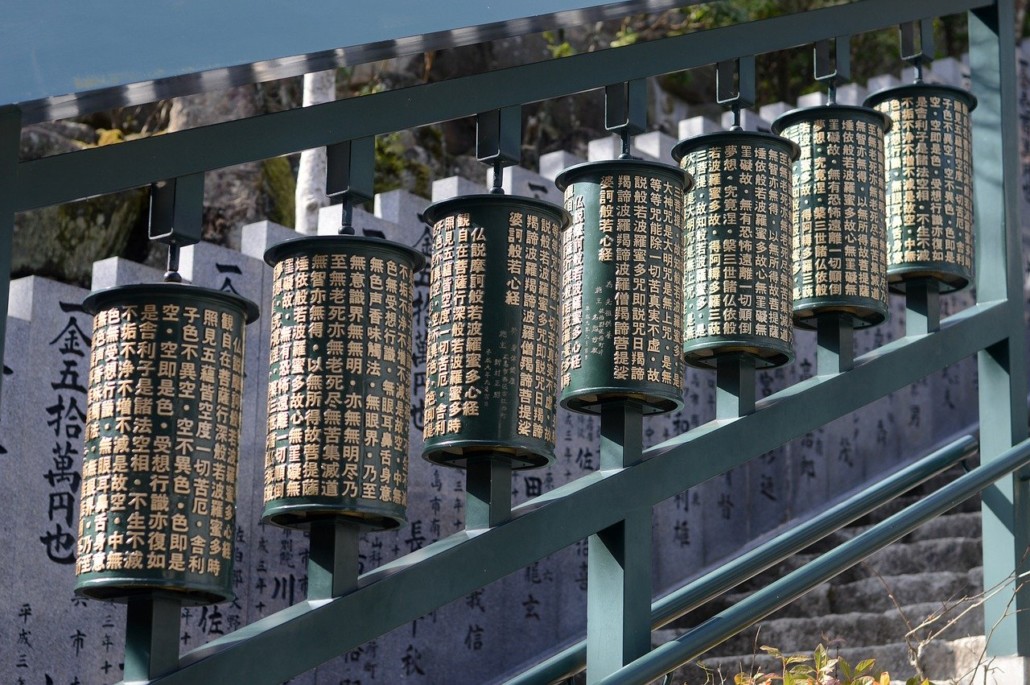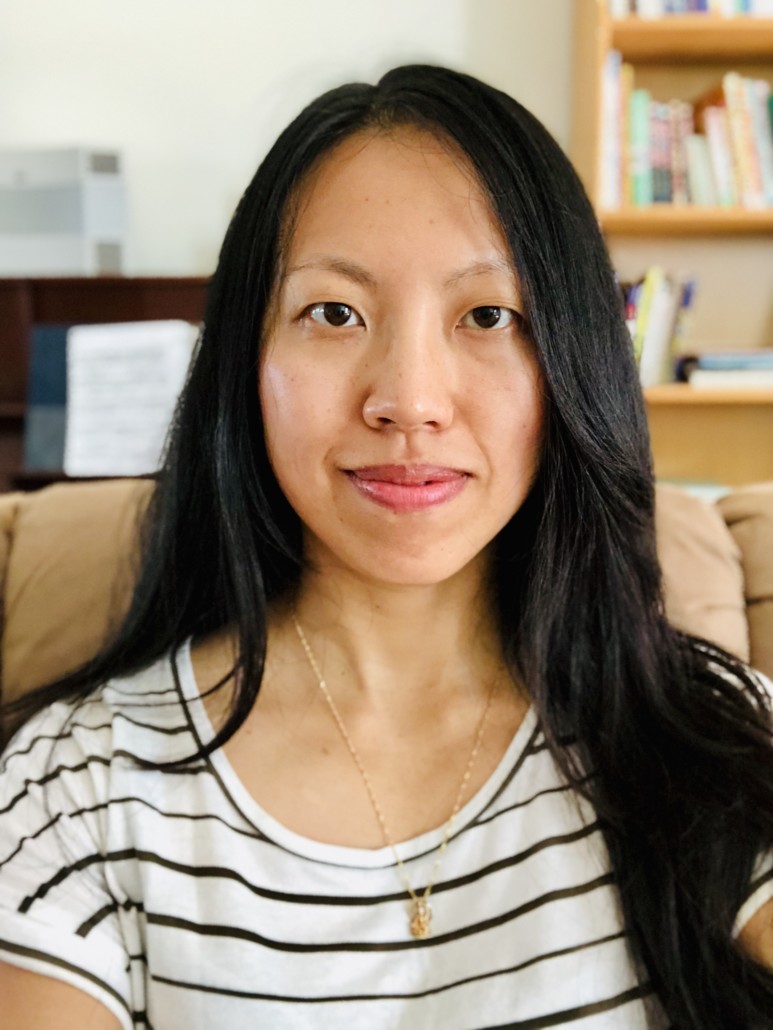After listening to this roundtable discussion on “Interdisciplinary Approaches to the Study of Buddhist Ritual,” I reflected on two questions that I have often asked myself and which remain shrouded in ambiguity still: what constitutes a ritual? And, what makes a ritual Buddhist? Rather than give us concrete definitions to these critical terms, the conversation that ensues highlights the unique perspectives and problematics faced by scholars working in different disciplines: cultural anthropology (Hannah Gould), textual studies (Ralph H. Craig III), and art history (Michelle C. Wang, Youn-mi Kim).
For facilitator Mathew Hayes and for Hannah Gould, ritual is a useful site for examining under-represented or altogether unrepresented groups in their respective fields, for example, the role of lay practitioners comingling around ritual space in early modern Japan, or the unexamined commercial actors in contemporary Japan who lie outside of the temple-lay-person nexus altogether. (I’m thinking in particular of the taxi drivers hired during COVID to perform hakamairi rituals at grave sites.) While I agree with Hannah Gould that there are indeed “different kinds of populations through which ritual is born,” as someone who works on pre-modern material, I recognize, as Michelle Wang acknowledges, that unlike anthropologists, I do not have the luxury of conducting interviews/fieldwork that would directly inform my understanding of the material in question. However, for this very reason, Michelle Wang optimistically regards ritual as a productive concept that has pushed various sub-fields towards an arena of greater interdisciplinarity, allowing scholars to creatively resource other kinds of knowledge to fill in the gaps or blind-spots to the materials investigated.
Still, even within the limitations described, extremely pertinent questions arise in the study of pre-modern materials. In Youn-mi Kim’s work with the Chaoyang Pagoda from the Liao dynasty, she discovered that in it, there is a relic depository designed as a ritual altar, one that has been completely sealed off from entry. Such a spatial design immediately challenges the assumption that ritual requires a human agent in order to gain efficacy. Kim explains, “There’s no human, ritual actant, but the materials themselves were designed to act as a material reactant, which could extend the retrieved efficacy. I’m not attempting to make a new definition of a ritual but I’m trying to expand the extent of the boundary of the definition of ritual.” Jumping forward into the contemporary, Gould added that now, with the advent of robotics and AI, the question of agency and ritual efficacy must broaden to include a consideration of non-human entities as well.
Another theme brought to light is the intersection of ritual and change, or ritual and transformation. In Ralph H. Craig III’s research on the phalaśruti or “explanation of benefits” portion of Buddhist sūtras that have been translated from Sanskrit into Chinese and Tibetan, one apparent challenge that arises is how to account for omissions of key lines or phrases in these different recensions. The intertextual nature of phalaśruti, coupled with their variability, generates interesting questions on how the transmission of Buddhist doctrine took place between different geographical regions and languages. Are these variabilities or transformations a result of multiple manuscripts in circulation? Scribal errors? Or were they deliberate alterations? And if the latter, why? Finally, as all the other participants noted, sometimes changes in ritual structure are engendered due to environmental, political, or even chance factors, as illustrated by Youn-mi Kim’s anecdote of her experience at one particular Korean monastery where the monks and nuns unknowingly developed different variations of the supposedly same meal ritual.
If we consider the agency of ‘things’ more broadly and what this might signify, I think there may be an even greater opportunity to integrate the various sub-disciplines on the table. A lot of work in anthropology for example (Henare, Holbraad, and Wastell 2007), has provided me useful frameworks to further interrogate the material that I encounter in Indian and Tibetan tantric materials spanning the eleventh to fourteenth centuries. Rather than reify the categories of persons and material objects as two separate entities, agency is constructed through a set of relations and assemblages ranging from materials, persons and sensory experiences to discourses, performative language and much more (Gentry 2017). I use the word performative deliberately since performance may imply the utterance of a dhāraṇī in one instance, or, in another, the instructions of a manual may require the grapheme representation of a seed syllable or mantra to be worn as an amulet or hung over a door, and that very grapheme itself becomes efficacious. In addition to the agency of the nonhuman material world, I would also add that central to the efficacy of many prescribed tantric rituals are the relationships cultivated with the non-human spirit world comprised of ḍākinīs, rakṣas, nāgas, and many other forms of spirit entities. In this regard, it seems that the intertextual work that Ralph is pursuing, looking directly at what texts say about efficacy, as well as Michelle Wang’s approach of breaking ritual down into “modular elements” may push us into fruitful territory.
While I agree that historical, political and social contextualization is indeed essential to all of our work, whether as self-identified anthropologists, art-historians, or Buddhist studies scholars, I would add that an equally rigorous engagement with the semiotics of Buddhist texts themselves, that is to say, an understanding of emic conceptions of human, non-human, relationality, power, efficacy, and the terms “ritual” or “practice” is required of all of us. If I may push us one step further, rather than rely on concepts like ‘ritual,’ ‘agency,’ ‘power’ or ‘symbol’ which hold particular valences in English, I suggest a renewed engagement with the various materials we work with to uncover how we can begin to reconceptualize our own relationship with language by foregrounding the very terms in which our materials/informants self-conceptualize in the first place. I say this because I have been surprised by the number of scholars who have written of tantric visualizations as “symbolic” for instance, where no discernable word for ‘symbol’ is used in the texts in question. It seems that unless we center the semiotics of the material we work with, we risk imputing our own unexamined concepts again and again. Given recent calls to decolonize the academy, it seems to me that to truly embark on this task, we must start by challenging the hidden assumptions behind the very terms we use to talk about Buddhist ritual in the first place.
With respect to the final part of the roundtable discussion on challenges and opportunities that have arisen as a result of COVID and the shift to moving everything online, I strongly echo Youn-mi Kim’s comment that one potential positive outcome of this otherwise dire predicament is the “democratization” of resources and knowledge, and the possibility of opening conversations up to fellow colleagues located in countries that are historically under-represented at conferences that take place in the U.S. Finally, as an American myself who is deeply hurt and perturbed by the social inequalities, bigotry, violence and racism that are a part of the reality that I and countless others are faced with, I support Ralph H. Craig III’s sentiment, that in all the various roles I play, whether as a grad-student, a mentor, or a teacher, I want to show up to all these spaces with compassion, and with a recognition of the full humanity of those around me. I appeal to all of you as my fellow academics to do the same. This is an opportune moment to remember that we are all first and foremost humans, most of us struggling in one way or another, and it’s time to show up for one another with care.
Works Cited:
Henare, Amiria J. M., Martin Holbraad, and Sari Wastell, eds. Thinking through Things: Theorising Artefacts Ethnographically. London ; New York: Routledge/Taylor & Francis Group, 2007.
Gentry, James Duncan. Power Objects in Tibetan Buddhism: The Life, Writings, and Legacy of Sokdokpa Lodrö Gyeltsen. Brill’s Tibetan Studies Library, volume 40. Leiden ; Boston: Brill, 2017.



